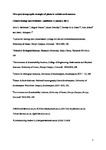Divergent demographic strategies of plants in variable environments

Date
2017-01-13Author
Subject
Metadata
Show full item recordAbstract
One of the best-supported patterns in life history evolution is that organisms cope with environmental fluctuations by buffering their most important vital rates against them. This demographic buffering hypothesis is evidenced by a tendency for temporal variation in rates of survival and reproduction to correlate negatively with their contribution to fitness. Here, we show that widespread evidence for demographic buffering can be artefactual, resulting from natural relationships between the mean and variance of vital rates. Following statistical scaling, we find no significant tendency for plant life histories to be buffered demographically. Instead, some species are buffered, whereas others have labile life histories with higher temporal variation in their more important vital rates. We find phylogenetic signal in the strength and direction of variance–importance correlations, suggesting that clades of plants are prone to being either buffered or labile. Species with simple life histories are more likely to be demographically labile. Our results suggest important evolutionary nuances in how species deal with environmental fluctuations.
Collections
Publisher
Place of Publication
Journal
Volume
Issue
Pagination
Author URL
Number
Recommended, similar items
The following license files are associated with this item:

